Helvetic Republic
In Swiss history, the Helvetic Republic (1798–1803) represented an early attempt to impose a central authority over Switzerland, which until then had consisted of self-governing cantons united by a loose military alliance (and ruling over subject territories such as Vaud).
Helvetic Republic | |||||||||||||||
|---|---|---|---|---|---|---|---|---|---|---|---|---|---|---|---|
| 1798–1803 | |||||||||||||||
.svg.png) Flag (reverse side)
 Official seal
| |||||||||||||||
 The Helvetic Republic, with borders according to the first Helvetic constitution of 12 April 1798 | |||||||||||||||
| Status | Client state of France | ||||||||||||||
| Capital | Aarau, later Lucerne | ||||||||||||||
| Common languages | Swiss French, Swiss German, Swiss Italian, Romansh | ||||||||||||||
| Government | Federal Republic | ||||||||||||||
| Historical era | French Revolutionary Wars | ||||||||||||||
• Confederation collapsed on French invasion | 5 March 1798 | ||||||||||||||
• Proclaimed | 12 April 1798 | ||||||||||||||
• Elections in Zürich | 14 April 1798 | ||||||||||||||
• Mutual defence treaty with France | 19 August 1798 | ||||||||||||||
• Diplomatic recognition by French allies | 19 September 1798 | ||||||||||||||
• Malmaison constitution | 29 May 1801 | ||||||||||||||
• Federal constitution | 27 February 1802 | ||||||||||||||
• Act of Mediation | 19 February 1803 | ||||||||||||||
| ISO 3166 code | CH | ||||||||||||||
| |||||||||||||||
Note: See below for a full list of predecessor states | |||||||||||||||
The French invaded Switzerland and turned it into an ally known as the "Helvetic Republic". The interference with localism and traditional liberties was deeply resented, although some modernizing reforms took place.[1][2] Resistance was strongest in the more traditional Catholic bastions, with armed uprisings breaking out in spring 1798 in the central part of Switzerland. The French Army suppressed the uprisings, but support for revolutionary ideals steadily increased, as the Swiss resented their loss of local democracy, the new taxes, the centralization, and the hostility to religion. Nonetheless, there were long-term impacts.[3]
The Republic being named Helvetic after the Helvetii, the Gaulish inhabitants of the Swiss Plateau in antiquity, was not an innovation; rather, the Swiss Confederacy had occasionally been dubbed Republica Helvetiorum in humanist Latin since the 17th century, and Helvetia, the Swiss national personification, made her first appearance in 1672.
History

During the French Revolutionary Wars of the 1790s, the French Republican armies expanded eastward. In 1793, the National Convention had imposed friendship with the United States and the Swiss Confederation as the sole limit delegating its powers in foreign policy to the Committee of Public Safety, but the situation changed when more conservative Directoire took power in 1795 and Napoleon conquered Northern Italy in 1796. The French Republican armies enveloped Switzerland on the grounds of "liberating" the Swiss people, whose own system of government was deemed as feudal, especially for annexed territories such as Vaud.
Part of a series on the |
|---|
| History of Switzerland |
 |
| Early history |
|
| Old Swiss Confederacy |
|
| Transitional period |
|
| Modern history |
|
| Timeline |
| Topical |
|
|
|
Some Swiss nationals, including Frédéric-César de La Harpe, had called for French intervention on these grounds. The invasion proceeded largely peacefully since the Swiss people failed to respond to the calls of their politicians to take up arms.
On 5 March 1798, French troops completely overran Switzerland and the Old Swiss Confederation collapsed. On 12 April 1798, 121 cantonal deputies proclaimed the Helvetic Republic, "One and Indivisible". On 14 April 1798, a cantonal assembly was called in the canton of Zürich, but most of the politicians from the previous assembly were re-elected. The new régime abolished cantonal sovereignty and feudal rights. The occupying forces established a centralised state based on the ideas of the French Revolution.
Many Swiss citizens resisted these "progressive" ideas, particularly in the central areas of the country. Some of the more controversial aspects of the new regime limited freedom of worship, which outraged many of the more devout citizens.
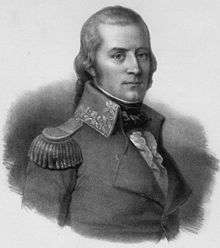
In response, the Cantons of Uri, Schwyz and Nidwalden raised an army of about 10,000 men led by Alois von Reding to fight the French. This army was deployed along the defensive line from Napf to Rapperswil. Reding besieged French-controlled Lucerne and marched across the Brünig pass into the Berner Oberland to support the armies of Bern. At the same time, the French General Balthasar Alexis Henri Antoine of Schauenburg marched out of occupied Zürich to attack Zug, Lucerne and the Sattel pass. Even though Reding's army won victories at Rothenthurm and Morgarten, Schauenburg's victory near Sattel allowed him to threaten the town of Schwyz. On 4 May 1798, the town council of Schwyz surrendered.[4]
On 13 May, Reding and Schauenburg agreed to a cease-fire, the terms of which included the rebel cantons merging into a single one, thus limiting their effectiveness in the central government. However, the French failed to keep their promises in respecting religious matters and before the year was out there was another uprising in Nidwalden which the authorities crushed, with towns and villages burnt down by French troops.
No general agreement existed about the future of Switzerland. Leading groups split into the Unitaires, who wanted a united republic, and the Federalists, who represented the old aristocracy and demanded a return to cantonal sovereignty. Coup-attempts became frequent, and the new régime had to rely on the French to survive. Furthermore, the occupying forces insisted that the accommodation and feeding of the soldiers be paid for by the local populace, which drained the economy. The treaty of alliance of 19 August with France, which also reaffirmed the French annexation of the Prince-Bishopric of Basel and imposed French rights over the Upper Rhine and the Simplon Pass for evident strategic reasons towards Germany and Italy, also broke the tradition of neutrality established by the Confederation. All this made it difficult to establish a new working state.
In 1799, Switzerland became a virtual battle-zone between the French, Austrian, and Imperial Russian armies, with the locals supporting mainly the latter two, rejecting calls to fight with the French armies in the name of the Helvetic Republic.
Instability in the Republic reached its peak in 1802–1803, which included the Bourla-papey uprising and the Stecklikrieg civil war of 1802. By then, it was 12 million francs in debt having started with a treasury of 6 million francs.[5] This, together with local resistance, caused the Helvetic Republic to collapse, and its government took refuge in Lausanne.
At that time, Napoleon Bonaparte, then First Consul of France, summoned representatives of both sides to Paris in order to negotiate a solution. Although the Federalist representatives formed a minority at the conciliation conference, known as the "Helvetic Consulta", Bonaparte characterised Switzerland as federal "by nature" and considered it unwise to force the country into any other constitutional framework.
On 19 February 1803, the Act of Mediation restored the cantons. With the abolition of the centralized state, Switzerland became a confederation once again.
Constitution
Before the advent of the Helvetic Republic, each individual canton had exercised complete sovereignty over its own territory or territories. Little central authority had existed, with matters concerning the country as a whole confined mainly to meetings of leading representatives from the cantons: the Diets.[6]
The constitution of the Helvetic Republic came mainly from the design of Peter Ochs, a magistrate from Basel. It established a central two-chamber legislature which included the Grand Council (with 8 members per canton) and the Senate (4 members per canton). The executive, known as the Directory, comprised 5 members. The Constitution also established actual Swiss citizenship, as opposed to just citizenship of one's canton of birth.[6] Under the Old Swiss Confederacy, citizenship was granted by each town and village only to residents. These citizens enjoyed access to community property and in some cases additional protection under the law. Additionally, the urban towns and the rural villages had differing rights and laws. The creation of a uniform Swiss citizenship, which applied equally for citizens of the old towns and their tenants and servants, led to conflict. The wealthier villagers and urban citizens held rights to forests, common land and other municipal property which they did not want to share with the "new citizens", who were generally poor. The compromise solution, which was written into the municipal laws of the Helvetic Republic, is still valid today. Two politically separate but often geographically similar organizations were created. The first, the so-called municipality, was a political community formed by-election and its voting body consists of all resident citizens. However, the community land and property remained with the former local citizens who were gathered together into the Bürgergemeinde.[7]
After an uprising led by Alois von Reding in 1798, some cantons were merged, thus reducing their anti-centralist effectiveness in the legislature. Uri, Schwyz, Zug and Unterwalden together became the canton of Waldstätten; Glarus and the Sarganserland became the canton of Linth, and Appenzell and St. Gallen combined as the canton of Säntis.
Due to the instability of the situation, the Helvetic Republic had over 6 constitutions in a period of 4 years.[6]
Legacy
The Helvetic Republic did highlight the desirability of a central authority to handle matters for the country as a whole (as opposed to the individual cantons which handled matters at the local level). In the post-Napoleonic era, the differences between the cantons (varying currencies and systems of weights and measurements) and the perceived need for better co-ordination between them came to a head and culminated in the Swiss Federal Constitution of 1848.
The Republic's 5-member Directory resembles the 7-member Swiss Federal Council, Switzerland's present-day executive.
The period of the Helvetic Republic is still very controversial within Switzerland.[8] It represents a key step toward the modern federal state. For the first time, the population was defined as Swiss, not as members of a specific canton. For cantons like Vaud, Thurgau and Ticino the Republic was a time of political freedom from other cantons. However, the Republic also marked a time of foreign domination and revolution. For the cantons of Bern, Schwyz and Nidwalden it was a time of military defeat followed by occupation and military suppression. In 1995, the Federal Parliament chose not to celebrate the 200 year anniversary of the Helvetic Republic, but to allow individual cantons to celebrate if they wished.[8]
Administrative divisions


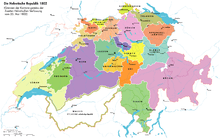
The Helvetic Republic reduced the formerly sovereign cantons to mere administrative districts, and in order to weaken the old power-structures, it defined new boundaries for some cantons. The Act of 1798 and subsequent developments resulted in the following cantons:
Predecessor states
As well as the Old Swiss Confederacy, the following territories became part of the Helvetic Republic:
Associate states
There were four associated states:


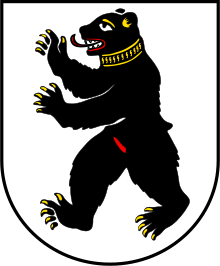
- Free state of the Three Leagues
Condominiums
There were 21 condominiums:






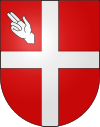

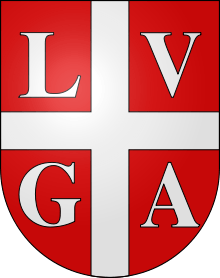













Protectorates
There were five protectorates:





Unassociated territories
The Helvetic Republic also annexed two territories not previously part of Switzerland:

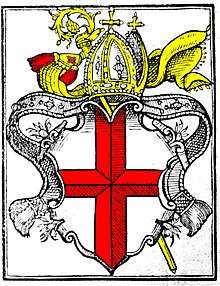
References
- Marc H. Lerner, "The Helvetic Republic: An Ambivalent Reception of French Revolutionary Liberty," French History (2004) 18#1 pp 50-75.
- R.R. Palmer, The Age of the Democratic Revolution 2:394-421
- Otto Dann; John Dinwiddy (1988). Nationalism in the Age of the French Revolution. Continuum. pp. 190–98.
- The French Invasion in German, French and Italian in the online Historical Dictionary of Switzerland.
- Hughes, Christopher, Switzerland (London, 1975) p.98
- Histoire de la Suisse, Éditions Fragnière, Fribourg, Switzerland
- Bürgergemeinde in German, French and Italian in the online Historical Dictionary of Switzerland.
- Helvetic Republic, Historiography and Remembrance in German, French and Italian in the online Historical Dictionary of Switzerland.
External links
- Helvetic Republic in German, French and Italian in the online Historical Dictionary of Switzerland.
- Divisions of Switzerland under Napoleon (in French)
| Wikimedia Commons has media related to Helvetic Republic. |

.svg.png)